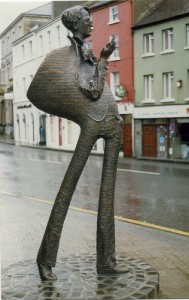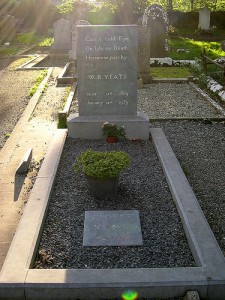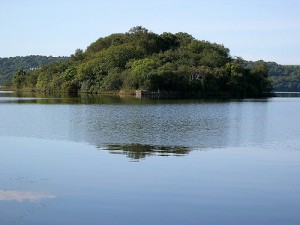If your routine is feeling a little drab and predictable and you could do with a little magic in your life, visit the “Land of Heart’s Desire” and see what inspired the Yeats brothers’ stunning poetry and painting. Yeats’ Country covers Sligo and parts of Leitrim and Roscommon, incorporating rolling expanses of mountains, lakes, and coastline that have influenced some of the most beautiful artistic creations the world has ever known. Book a hotel in Sligo and soak up the atmosphere on a scenic drive. Here are just some of the locations particularly associated with the poet W. B. Yeats:
Ballisodare
About 8km from Sligo Town, just off the N4, you’ll find Ballisodare, a village that not only offers excellent salmon fishing but also maintains a strong connection with W. B. Yeats. Relatives owned flour mills in the village, and the poet spoke warmly of his visits here. One of his most famous poems, “Down by the Sally Gardens,” is probably set here.
Sligo Town

The Yeats Memorial Building, housed in a red-brick Victorian building on Hyde Bridge in the heart of Sligo Town, serves as the headquarters of the Yeats Society, the Yeats International Summer School, and the Sligo Art Gallery. You can listen to lectures, discover more about Yeats’s work, and admire the quirky bronze statue of the poet outside. Take time to walk around the town: You’ll discover references to the poet almost everywhere you look.
Rosses Point
Yeats spent childhood summer holidays at his uncle’s home, Elsinore House at Rosses Point, Nothing but ruins remain of the house, which was built by the pirate Black Jack and reputed to be haunted by him. During his time holidaying on the Sligo coast, Yeats gathered stories from the locals, which he published as The Celtic Twilight in 1893, Take a stroll along the shoreline and you will understand how the stunning seascapes and the twin towering presences of Ben Bulben and Knocknarea inspired the poet, particularly in “The Stolen Child.”
Drumcliffe
 Yeats’s maternal grandfather was the rector at Drumcliffe, site of a 6th-century monastic settlement, and the poet chose this idyllic spot as his final resting place. He died in the French town of Roquebrune-Cap-Martin in January 1939, but his remains were re-interred at Drumcliffe in 1948. Despite the pomp of the ceremony, which was attended by a large number of dignitaries, the grave itself is a simple affair, marked by a plain grey slab inscribed with the words: “Cast a cold Eye On Life, on Death. Horseman, pass by.”
Yeats’s maternal grandfather was the rector at Drumcliffe, site of a 6th-century monastic settlement, and the poet chose this idyllic spot as his final resting place. He died in the French town of Roquebrune-Cap-Martin in January 1939, but his remains were re-interred at Drumcliffe in 1948. Despite the pomp of the ceremony, which was attended by a large number of dignitaries, the grave itself is a simple affair, marked by a plain grey slab inscribed with the words: “Cast a cold Eye On Life, on Death. Horseman, pass by.”
Lough Gill
 “The Lake Isle of Innisfree” is one of Yeats’s most famous poems. See the place that inspired him to write “I will arise and go now, and go to Innisfree” with a trip to the shores of Lough Gill. You won’t be able to land on the island, but you can see it from the shore or take a boat trip from Parkes Castle.
“The Lake Isle of Innisfree” is one of Yeats’s most famous poems. See the place that inspired him to write “I will arise and go now, and go to Innisfree” with a trip to the shores of Lough Gill. You won’t be able to land on the island, but you can see it from the shore or take a boat trip from Parkes Castle.
Lissadell House
Yeats wrote in his memoirs of the grey stone walls of Lissadell, which his merchant grandfather would have seen from the town of Sligo, and which housed the aristocratic Gore-Booth family. Yeats later befriended the sisters, Constance and Eva Gore-Booth, and he stayed in Lissadell House in 1894.
